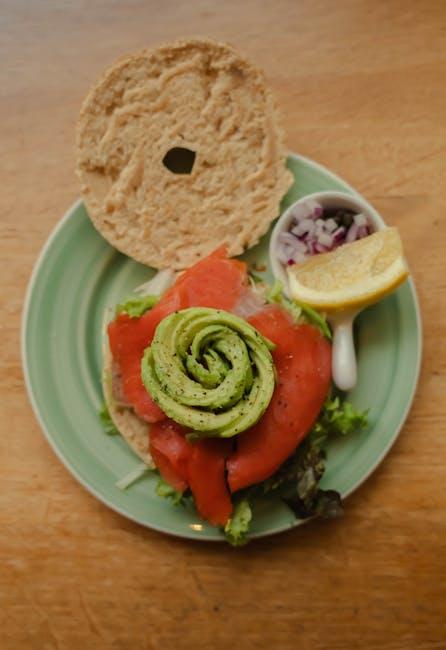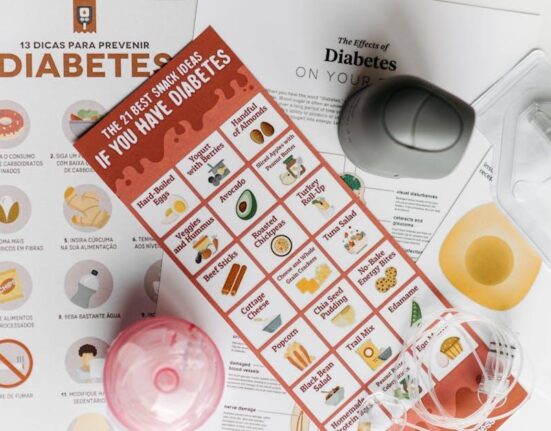Imagine a world where the simple act of eating—once a source of joy—becomes a minefield of hidden dangers. For millions grappling with food allergies, each meal demands vigilance, often accompanied by fear and frustration. Yet, amidst these challenges, a beacon of hope shines through: the Gut and Psychology Syndrome (GAPS) protocol. This innovative approach, grounded in the connection between digestive health and the immune system, offers a promising path toward alleviating allergic reactions. In this article, we delve into how GAPS can help individuals reclaim their relationship with food, exploring its principles, benefits, and the science that supports its role in overcoming food allergies.
Table of Contents
- Understanding the Connection Between Food Allergies and Gut Health
- Exploring the Core Principles of the GAPS Diet for Immune Support
- Identifying Common Allergens and Safe Foods on the GAPS Protocol
- Step-by-Step Guidance to Transitioning into the GAPS Lifestyle
- Practical Tips for Managing Food Allergies While Following GAPS
- Q&A
- In Conclusion

Understanding the Connection Between Food Allergies and Gut Health
The intricate relationship between food allergies and gut health is a pivotal factor that often goes unrecognized in traditional allergy treatments. When the gut lining becomes inflamed or damaged, its permeability increases—a condition commonly called “leaky gut.” This allows undigested food particles and toxins to pass into the bloodstream, triggering immune reactions that often mimic or exacerbate allergies. By nurturing the gut lining with nutrient-dense foods and supportive probiotics, the immune system can recalibrate, potentially reducing allergic responses and promoting overall well-being.
Key components that support gut resilience include:
- Fermented foods: Rich in beneficial bacteria that restore microbial balance.
- Bone broth: Provides collagen and amino acids to heal and seal the gut lining.
- Elimination of processed foods: Reduces inflammatory triggers.
Research highlights a compelling correlation between gut microbiome diversity and reduced prevalence of food allergies, affirming that a well-nourished, balanced gut environment can serve as a frontline defense in managing or even overcoming food sensitivities.

Exploring the Core Principles of the GAPS Diet for Immune Support
At the heart of this nutritional approach lies the idea that healing the gut can dramatically bolster the immune system. By focusing on nutrient-dense, easily digestible foods, the plan encourages consumption of homemade bone broths, fermented vegetables, and healthy fats—all known for their gut-soothing properties. These foundational foods not only promote the regeneration of the intestinal lining but also foster a balanced microbiome, which is essential for reducing inflammation and preventing allergic reactions.
Key elements include:
- Elimination of processed foods and sugars to minimize immune triggers.
- Inclusion of probiotic-rich fermented foods to restore beneficial bacteria.
- Focus on easily digestible meals that support nutrient absorption and repair.
| Core Principle | Benefit |
|---|---|
| Bone Broth | Soothes gut lining, provides collagen |
| Fermented Foods | Boosts healthy bacteria for immunity |
| Healthy Fats | Reduces inflammation, supports cell repair |

Identifying Common Allergens and Safe Foods on the GAPS Protocol
When navigating the GAPS protocol, understanding which foods commonly trigger allergic reactions is crucial for healing and avoiding setbacks. Many individuals discover that gluten, dairy, soy, and processed sugars are among the primary offenders that exacerbate inflammation and digestive distress. Synthetic additives, preservatives, and nightshade vegetables such as tomatoes and peppers can also irritate sensitive digestive systems. By prioritizing fresh, nutrient-dense foods while eliminating these common allergens, the GAPS diet creates an environment for the gut lining to repair and inflammation to subside. Remember, every individual reacts differently, and careful observation during the introduction phase can help pinpoint specific triggers unique to your body.
Conversely, the GAPS protocol highlights a range of soothing and safe food choices that support gut restoration and immune balance. Emphasizing home-cooked bone broths, fermented vegetables, organic meats, and healthy fats like avocado and coconut oil helps deliver essential nutrients while maintaining gut flora diversity. Here’s a simple overview of safe and commonly avoided foods on the GAPS diet:
| Safe Foods | Common Allergens to Avoid |
|---|---|
| Homemade bone broth | Gluten-containing grains (wheat, barley, rye) |
| Fermented vegetables (sauerkraut, kefir) | Dairy products (milk, cheese, yogurt) unless fermented |
| Organic grass-fed meats | Soy and processed soy derivatives |
| Avocado and coconut oil | Refined sugars and artificial sweeteners |

Step-by-Step Guidance to Transitioning into the GAPS Lifestyle
Embarking on the GAPS lifestyle involves a mindful shift toward nutrient-dense, healing foods while eliminating common irritants. Start by embracing homemade bone broths, fermented vegetables, and healthy fats as staples to restore gut health. Transition gradually to allow your digestive system to adapt—begin with the Introduction Diet, moving through its stages only when your body feels ready. Keeping a simple food diary can be invaluable during this time, helping you track reactions and energy levels as you fine-tune your personalized regimen.
Consistency is key, but so is flexibility. Here’s a gentle checklist you can follow for a smooth entry:
- Consult with a healthcare professional familiar with GAPS.
- Eliminate processed foods, sugars, and inflammatory grains.
- Hydrate well with herbal teas and broths.
- Incorporate fermented foods gradually to rebuild beneficial flora.
- Listen to your body and adjust phases accordingly.
| Phase | Main Focus | Duration |
|---|---|---|
| Stage 1 | Bone broth & gentle introduction foods | 3-7 days |
| Stage 2 | Vegetables & raw egg yolks | 1-2 weeks |
| Stage 3 | Fermented dairy & nuts | 2+ weeks |

Practical Tips for Managing Food Allergies While Following GAPS
Balancing the GAPS diet while managing food allergies can feel like a culinary puzzle, but with a strategic approach, it becomes an empowering journey. Start by carefully identifying trigger foods through elimination and reintroduction phases. Keeping a detailed food diary helps you track symptoms, making patterns easier to spot. Always prioritize whole, unprocessed foods; for example, bone broths and homemade ferments can be gentle on your digestive system and less likely to provoke allergic reactions. Involve your palate by experimenting with safe herbs and natural flavor enhancers to keep your meals exciting without compromising your health.
Additionally, planning ahead is vital to avoid accidental exposures and stress. Design your weekly meal plans with allergy-friendly GAPS staples in mind and prepare snacks that can support fast energy boosts when eating out isn’t an option. Here’s a quick reference table for allergen-friendly swaps that harmonize with GAPS principles:
| Allergen | GAPS-Friendly Alternative | Benefits |
|---|---|---|
| Dairy | Coconut yogurt | Probiotic-rich, gut-soothing |
| Eggs | Chia seeds (soaked) | Omega-3 source, binding agent |
| Gluten | Vegetable noodles (zucchini/pumpkin) | Low-carb, nutrient dense |
| Nuts | Sunflower seed butter | Allergy safe, nutrient-packed |
Q&A
Q&A: Overcoming Food Allergies with GAPS
Q1: What is the GAPS diet, and how does it relate to food allergies?
A1: The GAPS diet, short for Gut and Psychology Syndrome, was developed by Dr. Natasha Campbell-McBride. It focuses on healing the gut lining through nutrient-dense, probiotic-rich foods to restore digestive health. Since many food allergies stem from an impaired gut barrier and dysbiosis, following the GAPS protocol aims to reduce allergic reactions by repairing gut integrity and balancing gut flora.
Q2: Can the GAPS diet completely cure food allergies?
A2: While the GAPS diet has helped many people lessen the severity of their food allergy symptoms, it is not a guaranteed cure. Outcomes vary based on individual health, the nature of the allergies, and commitment to the diet. The primary goal is to reduce immune system overreactions by addressing the gut’s role in allergy development.
Q3: How does the GAPS diet work to reduce allergic responses?
A3: GAPS emphasizes eliminating common irritants like processed foods, sugars, and starches that disrupt gut balance. It replaces these with homemade broths, fermented vegetables, and healthy fats that nourish beneficial bacteria and heal the intestinal walls. This promotes immune tolerance by preventing allergens from leaking into the bloodstream and triggering hypersensitivity.
Q4: Are all food allergies addressed by GAPS or only certain types?
A4: GAPS is generally most effective for food sensitivities and intolerances linked to gut dysfunction, such as reactions to dairy, gluten, and processed foods. Severe, life-threatening allergies like those to peanuts or shellfish require medical management. GAPS may complement but should never replace emergency treatments or advice from allergy specialists.
Q5: What are some initial steps to start the GAPS diet for food allergy sufferers?
A5: Starting the GAPS diet involves a strict introduction phase, eliminating all potentially allergenic and hard-to-digest foods. This phase usually includes homemade meat or fish broth, non-starchy vegetables, and probiotic foods like sauerkraut. Gradually, more foods are added back as the gut heals and tolerance improves, based on individual response.
Q6: Are there any risks or challenges with using GAPS for food allergies?
A6: GAPS requires considerable time, effort, and access to fresh, nutrient-rich foods, which can be challenging. Sudden dietary restrictions without professional guidance may cause nutritional imbalances. Also, some individuals might find the elimination phase restrictive or face initial digestive discomfort. Working with a healthcare provider or dietitian experienced in GAPS is advisable.
Q7: How can someone monitor progress while using the GAPS diet for allergies?
A7: Keeping a detailed food and symptom diary helps track improvements in allergy reactions and overall digestion. Regular consultations with healthcare professionals can monitor nutritional status and adjust the approach. Many report gradual reductions in symptoms such as bloating, itching, and respiratory issues as gut health restores.
Q8: Is the GAPS diet suitable for children with food allergies?
A8: The GAPS diet can be adapted for children and has been used successfully in pediatric cases to address gut-related issues, including some food sensitivities. However, due to the diet’s restrictive nature, parents should seek medical advice to ensure children receive balanced nutrition throughout the process.
This Q&A explores how the GAPS diet offers a promising, gut-centered approach to mitigating food allergies by fostering digestive healing and immune balance, while recommending caution and professional support throughout the journey.
In Conclusion
In the journey of overcoming food allergies, the GAPS diet emerges not just as a nutritional protocol but as a hopeful pathway toward healing. By nurturing the gut and restoring balance, it offers a fresh perspective on managing sensitivities that often feel overwhelming. While the road may require patience and personalized adjustments, embracing GAPS can be a transformative step toward reclaiming comfort and well-being at the table. Ultimately, the promise lies not in a quick fix, but in empowering the body’s natural resilience—one mindful bite at a time.













Leave feedback about this